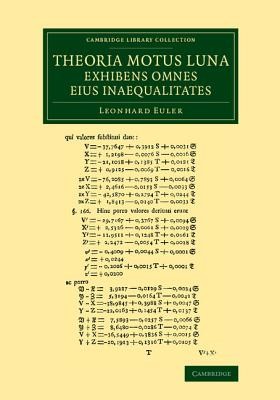
- We will send in 10–14 business days.
- Author: Leonhard Euler
- Publisher: Cambridge University Press
- ISBN-10: 110806535X
- ISBN-13: 9781108065351
- Format: 17.8 x 25.4 x 1.9 cm, minkšti viršeliai
- Language: English
- SAVE -10% with code: EXTRA
Theoria Motus Lunae Exhibens Omnes Eius Inaequalitates (e-book) (used book) | bookbook.eu
Reviews
Description
The problem of the moon's orbit was one that Leonhard Euler (1707-83) returned to repeatedly throughout his life. It provided a testing ground for Newton's theory of gravitation. Could the motion of the moon be entirely accounted for by Newton's theory? Or, as Euler initially suspected, did other forces need to be invoked? For practical purposes, if the moon's orbit could be accurately predicted, its motion would provide the universal timekeeper required to solve the longitude problem. In addition to the mathematical 'three-body problem', a topic still under investigation today, Euler was faced with the statistical problem of reconciling observations rendered inconsistent by experimental error. The present work, published in Latin in 1753, is Euler's triumphant solution. It may not be the last word on a subject which has occupied mathematicians and astronomers for over three centuries, but it showed that Newton's laws were sufficient to explain lunar motion.
EXTRA 10 % discount with code: EXTRA
The promotion ends in 23d.11:03:17
The discount code is valid when purchasing from 10 €. Discounts do not stack.
- Author: Leonhard Euler
- Publisher: Cambridge University Press
- ISBN-10: 110806535X
- ISBN-13: 9781108065351
- Format: 17.8 x 25.4 x 1.9 cm, minkšti viršeliai
- Language: English English
The problem of the moon's orbit was one that Leonhard Euler (1707-83) returned to repeatedly throughout his life. It provided a testing ground for Newton's theory of gravitation. Could the motion of the moon be entirely accounted for by Newton's theory? Or, as Euler initially suspected, did other forces need to be invoked? For practical purposes, if the moon's orbit could be accurately predicted, its motion would provide the universal timekeeper required to solve the longitude problem. In addition to the mathematical 'three-body problem', a topic still under investigation today, Euler was faced with the statistical problem of reconciling observations rendered inconsistent by experimental error. The present work, published in Latin in 1753, is Euler's triumphant solution. It may not be the last word on a subject which has occupied mathematicians and astronomers for over three centuries, but it showed that Newton's laws were sufficient to explain lunar motion.


Reviews